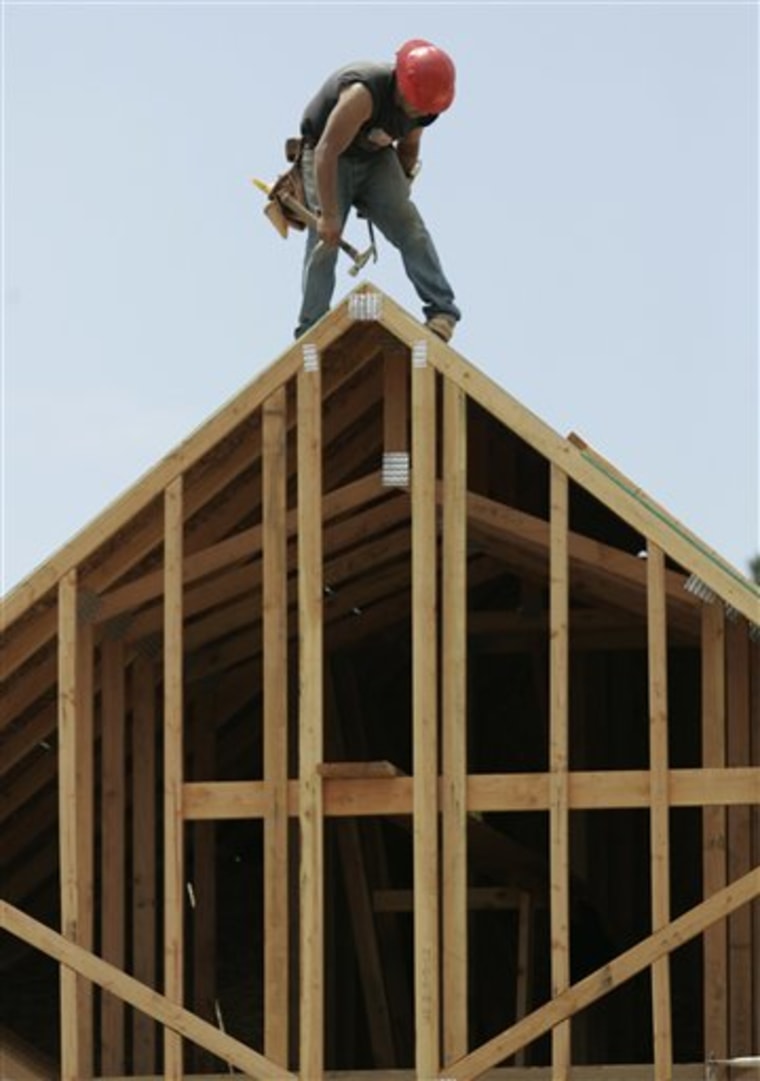Orders for large manufactured goods rose sharply last month while sales of new homes surged with help from government incentives, giving the economic recovery a jolt in April.
Demand for commercial aircraft lifted requests for durable goods 2.9 percent last month, the Commerce Department said Wednesday. That was the best showing in three months and more than double expectations.
Excluding transportation, orders fell 1 percent in April. But that came after the March figures were revised to show a 4.8 percent jump.

A durable good is a product that is expected to last at least three years.
A separate report from Commerce showed new single-family homes jumped 14.8 percent to a seasonally adjusted annual rate of 504,000 units. The April gain followed a 29.8 percent surge in March, the biggest monthly increase in 47 years.
Housing sales were pushed higher this spring by a stampede of buyers trying to sign sales contracts before tax credits expired on April 30. Historically low mortgage rates also helped fuel purchases. But sales are expected to slump in the coming months as households deal with slow job growth and tight credit.
Wall Street appeared to view the government reports favorably. The Dow Jones industrial average rose more than 60 points in early trading.
Manufacturing has held steady during the recovery. U.S. companies are benefiting from rising demand at home and in major export markets.
There are concerns that a debt crisis in Europe could derail the global recovery. Financial markets have been roiled in recent weeks by fears that the problems facing Greece could spread to other heavily indebted European countries, such as Spain and Portugal.
But economists say the U.S. manufacturing industry may be strong enough to weather Europe's troubles.
Manufacturing momentum
"April's durable goods orders figures demonstrate that, despite the fiscal meltdown in Europe, the recovery in the American manufacturing sector is still gathering momentum," said Paul Ashworth, senior U.S. economist at Capital Economics.
The rise in orders was led by a 228 percent surge in demand for commercial aircraft. The increase reflected strong demand for aircraft manufactured by Boeing Co. It also more than offset a 71.2 percent plunge in March in the highly volatile category.
Orders for motor vehicles climbed 1.6 percent following an even stronger 4.5 percent gain in March. Automakers continue to dig out of the deep downturn that hit their industry over the past two years. Total manufacturing orders rose 16.1 percent.
The 1 percent drop in orders excluding transportation was a result of declines in a number of areas that had big gains in March.
The big jump in home sales did not boost home values. The median sales price fell to $198,400 in April, 9.6 percent below the March median price for a new home. The median is the midpoint where half the homes sold for more and half for less.
The two months of big sales increases pushed sales activity to the highest level since May 2008. But sales remained well below the peaks set at the height of the housing boom.
Sales showed strength in all areas of the country in April except the Northeast. Activity there showed no change last month.
Sales rose 31.6 percent in the Midwest, 21.7 percent in the West and 10.8 percent in the South.
First-time buyers were eligible for a tax credit of up to $8,000. Current owners who bought and moved into another home could qualify for a credit of up to $6,500. Buyers had to sign contracts by April 30 but they have until June 30 to close on the sale.
The tax credit spurred sales of both new and previously occupied homes. The National Association of Realtors reported Monday that sales of previously occupied homes jumped 7.6 percent in April.